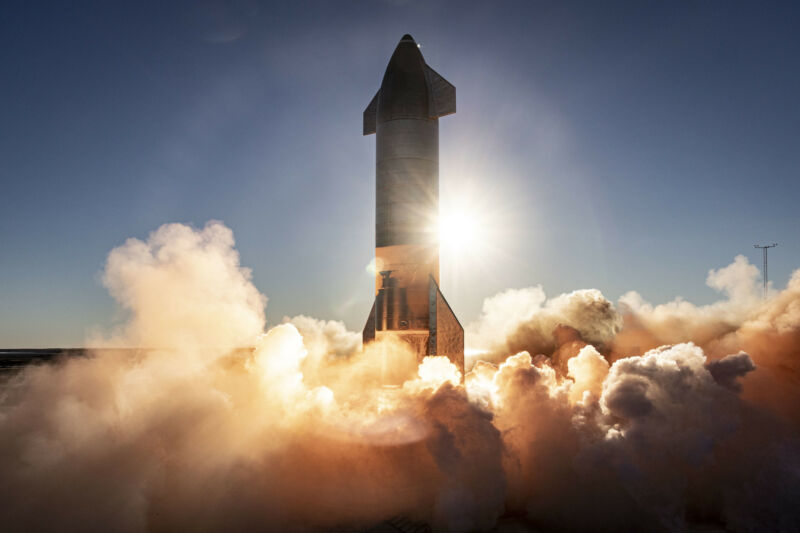
Enlarge / SpaceX's Starship is expected to have landing legs. Its first stage launch vehicle, Super Heavy, may not. (credit: SpaceX)
To build a fully reusable launch system for its interplanetary Starship vehicle, SpaceX has had to solve myriad technical challenges, such as slowing the massive spacecraft down as it reenters Earth's atmosphere at near-orbital velocities.
But perhaps the biggest challenge—as always, with rockets—is fairly mundane: its mass. The goal with a rocket is to build the lightest possible vehicle with the greatest amount of performance. In theory, it sounds simple. But in practice, containing volatile liquids at high pressures is anything but simple. And with a fully reusable launch system, SpaceX has the added challenge of building vehicles that can withstand the rigor of launch, perform in a vacuum, and then return screaming through the atmosphere to land back at sea-level pressures.
The need to build light, strong, and adaptable vehicles sometimes leads to interesting design choices. At the end of 2020, SpaceX founder Elon Musk took to his favorite social network, Twitter, to share one of them with his followers. "We’re going to try to catch the Super Heavy Booster with the launch tower arm, using the grid fins to take the load," he said. The Super Heavy rocket, likely to have about 28 Raptor engines, will launch Starship into Earth orbit.
No comments:
Post a Comment